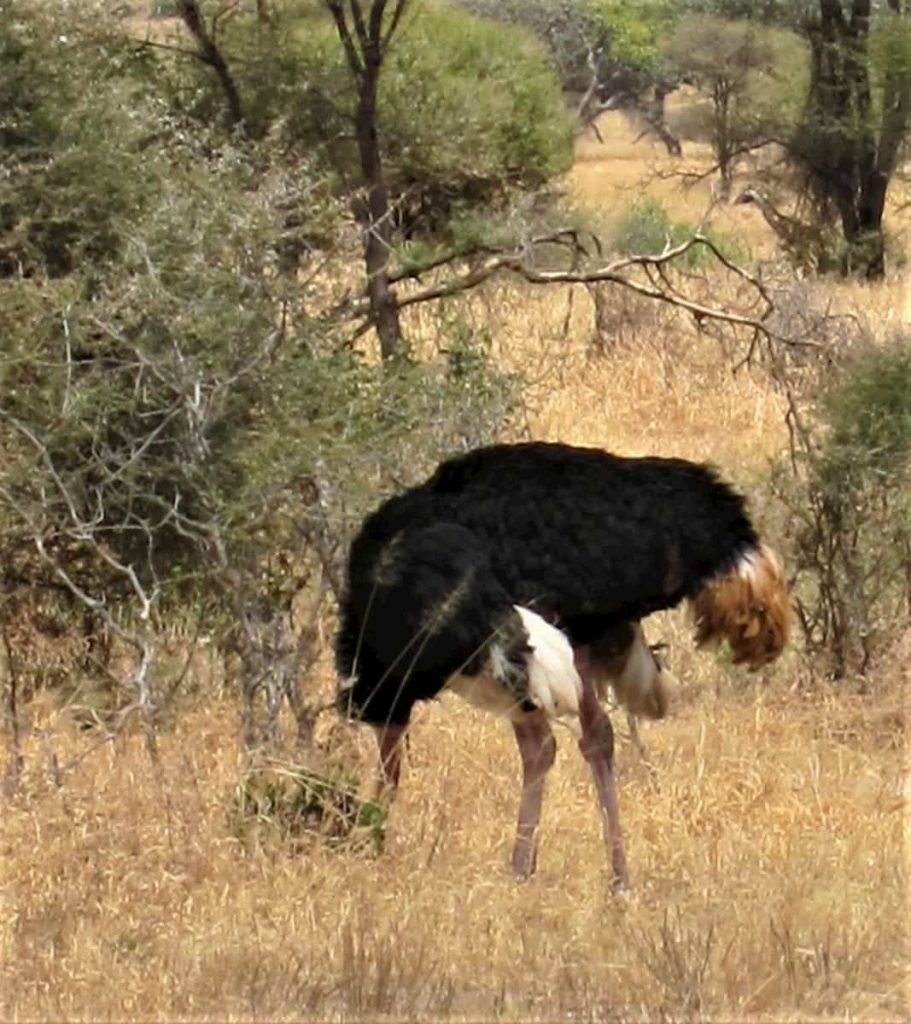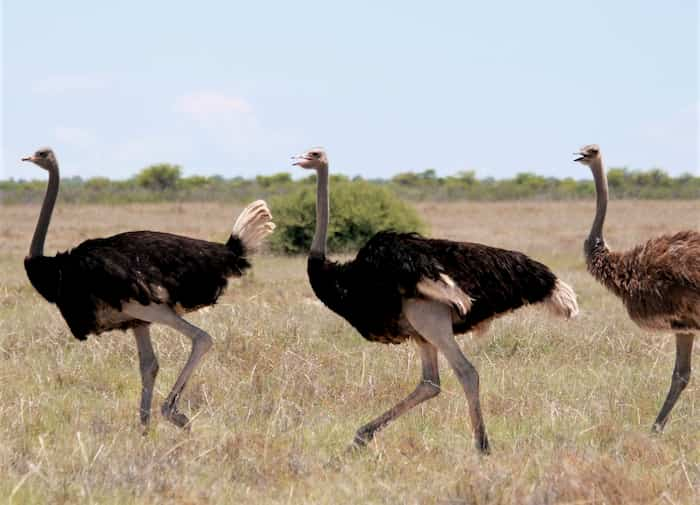Do ostriches bury their heads in the sand?

The “Ostrich head in sand” myth.
Head in sand or Putting your head in the sand supposedly comes from Ostriches’ habit to bury the head in the sand when danger occurs. But do they really do that? Isn’t that stupid? Well, birds are not always very smart, and ostriches are among the least intelligent so maybe they really could do something that irrational. But first, let’s look at the nature of this amazing bird.
The Ostrich
The Ostrich is the largest bird on the planet. It can weigh up to 350 pounds and reach up to 9 feet in height. It’s also one of the oldest bird species still around today. Ostrich-like birds existed already 60 million years ago.
The various Ostrich species live in Africa, north, and south of the Equatorial rainforest area, where they occur in a wide range of different open habitats.
It’s a very powerful animal adapted to life on the large open spaces of the African Savanna. Its strong and muscular legs can run at a maximum of 43 mph (70 km/h). It can keep a slower pace of 30 mph (50km/h) for hours.
Ostriches actually don’t need to bury their head in the sand.
The Ostrich is in no way defenseless. The big predators of the African continent are a constant threat to the grasseaters. Every Gnu, Gazelle, or Antilope needs to have a defense strategy, and the Ostrich is no exception.

First of all, it can run. It has extremely good eyesight so it spots the enemy from kilometers away. And even though it can’t outrun a cheetah or even a lion, its extraordinary stamina makes it difficult prey for wild dogs and hyenas.
Then if it is caught, it still has a fair chance to get a kick in from its powerful legs. The two-toed foot is equipped with a 4-inch long claw. A kick from an ostrich can kill a lion.
The Ostrich buries its head in the sand – What does it mean?
To bury the head in the sand is an expression that comes from the ostrich’s supposed habit of just sticking the head into the ground if danger approaches. It’s sometimes attached to an idea that the ostrich connects what it sees with what the seeing agent sees. “If I don’t see the Lion, the lion doesn’t see me”.
The metaphoric meaning is someone who avoids confrontation or even avoids doing anything when facing a problem. Sticking your head in the sand is not being able to face reality… Pretending that the issue isn’t there. It is an attribute for not acting at all when some sort of intervening is necessary… To hide and not face the obstacle or the difficulty.
Why is the myth about ostriches false?
The whole idea from a naturalistic, self-preservation point of view is absolute nonsense. To be able to stick the head into the ground, it would have to be soft soil, desert sand, runny, and dry. The African savannah is hard and flat, and burying anything is difficult and time-consuming. It’s not for defense. Then, if you stick your head under the ground, you’re left without vision and without mobility, as well as without air. It would be an utterly stupid thing to do.
Where does the “ostrich head in sand” myth come from?

The myth could originate from Ostrich’s defense behavior in certain situations. During the mating season, the male makes a shallow pit on the ground. He then tries to attract the females to lay their eggs there. The alpha male and alpha female incubate the eggs for around 40 days.
They have to turn the eggs periodically, and often they keep adjusting and moving the eggs around. From a distance, as the ostrich stands in a shallow pit, it can seem like the head is under the sand.
What does the ostrich do if he’s attacked during nesting?
If attacked during this period the Ostrich may just lie down in the nest instead of running away, to protect the eggs. Stretching the head and neck as close as possible to the bottom of the nest could give the illusion that he/she is actually hiding the head in the sand.
Another plausible explanation for the “head in the sand” phenomenon could be that the head of the Ostrich is very small, compared to the body. It would be enough that the huge bird eats something from the ground, and it could easily seem like it’s sticking its head down into the soil.
Still, Ostriches do have some strange features.
As said before, the Ostrich is not very bright. The brain is as big as a walnut. And they can be quite aggressive and establish territory. That is good to know if you would try to keep them at your farm. So, if you have to face the ostrich and approach it for any reason, bring a broom or a rake or anything else that is long. Keep it straight up and the Ostrich will think that you’re taller than him and leave you in peace.
Conclusion
No, Ostriches do not stick their heads in the sand if danger occurs. Though not very intelligent birds, they’re not that stupid.

sources